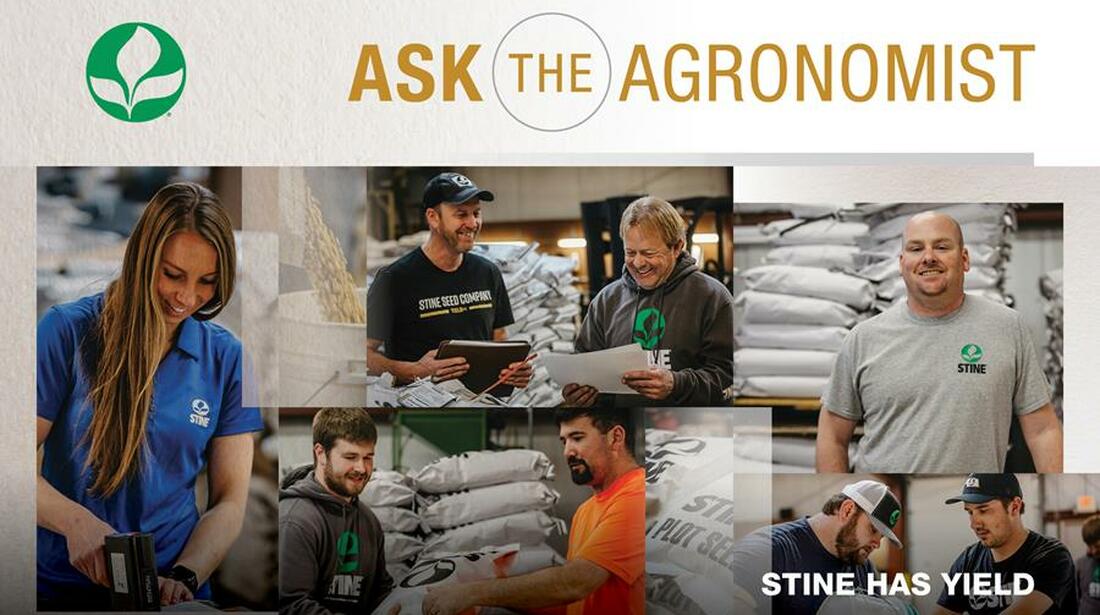Selecting the right genetics for the right field is a big piece of the puzzle for growers each year, but it’s only part of the solution. Success in the field goes beyond putting the best seed in the ground. A successful season is contingent upon many variables. That’s where Stine’s agronomy team comes into the equation.

“Our goal is to deliver value to the growers, not only through high-yielding genetics but also by providing service through knowledgeable people who can answer the tough agronomic questions,” says Tom Larson, Stine’s director of agronomy.
At Stine, we have two branches of agronomy: technical agronomists and field agronomists. While both are comprised of knowledgeable advisors who are available to provide expertise and support in all things agronomy, they are different in a few ways.
Technical agronomists are tenured leaders in their field. They handle a larger territory than field agronomists and spend much of their time reviewing the data from our plot programs and comparing the agronomics of each product to determine the best placement of that seed. They also look at our experimental products and review whether they should be advanced to market. Technical agronomists also provide technical training for our sales reps in our Product Development Plots (PDP) so they can get a firsthand look at how the products perform in their region.
For example, Tyler DuBay, our soybean technical agronomist, has a background in soybean research, so he evaluates our soybean research plots. He then takes that data and turns it into training resources for our independent sales representatives (ISRs) and regional sales agronomists (RSAs) to share with their grower customers.
“My No. 1 goal as a soybean technical agronomist is to bring awareness and knowledge internally and externally as to why and how Stine has and will continue to have the best soybean genetics in the industry,” says DuBay.
Our technical agronomists include Tyler DuBay (national), Tony Lenz (north-central and western Corn Belt), Kayla Noble (central and northern Corn Belt), Mark Johnson (south-central U.S.) and Bill Kessinger (eastern Corn Belt to East Coast).
Fields agronomists, on the other hand, are our more localized, boots-on-the-ground team. They provide direct support to our ISRs and RSAs to help troubleshoot any challenges our grower customers may face throughout the season. They are also responsible for helping set up our PDP plots in their territories and scouting the plots throughout the season.
Our field agronomists include Ben Shepherd (North Dakota, South Dakota and Minnesota), Daniel Greblunas (Nebraska, Kansas and Iowa), Faith Hedrick (Illinois and Wisconsin), Ian Matzenbacher (Illinois, Ohio and Indiana) and Jacob Foote (Indiana, Michigan, Ohio and Pennsylvania).
“My primary goal [as a field agronomist] is to learn more about the challenges that Stine seed can face throughout the year,” says Greblunas. “I also use my knowledge of farming and agronomy to promote the Stine brand.”
While field and technical agronomists have some differentiators, they also overlap in many ways. Both are available to our sales team and customers to assist with agronomic questions and insights. They both work with plot cooperators to establish our PDP plots throughout their territories and collect data from those plots to train our sales reps. A few of our agronomists have even spent time as RSAs, so they’re well-versed in our sales programs in addition to our products.
“The knowledge base of our agronomists is vast and impressive,” says Larson. “They have decades of experience in the industry, and their No. 1 goal is and always will be to provide the best agronomic insights to give our genetics the best chance at maximizing yield to deliver profitability to the grower.”
Learn more about our agronomy team. To find an agronomist near you, connect with your local sales rep to get started.
Related Articles
-

Use Stine’s XP® seed treatments to prevent early injury to your crops
December 2025 in Agronomy
-

Understanding Stine’s enhanced oil profile soybeans
December 2025 in Agronomy
-

Soil sampling sets the stage for spring
November 2025 in Agronomy
-

Corn production growth paves way for more high-performing Stine® hybrids
November 2025 in Agronomy



